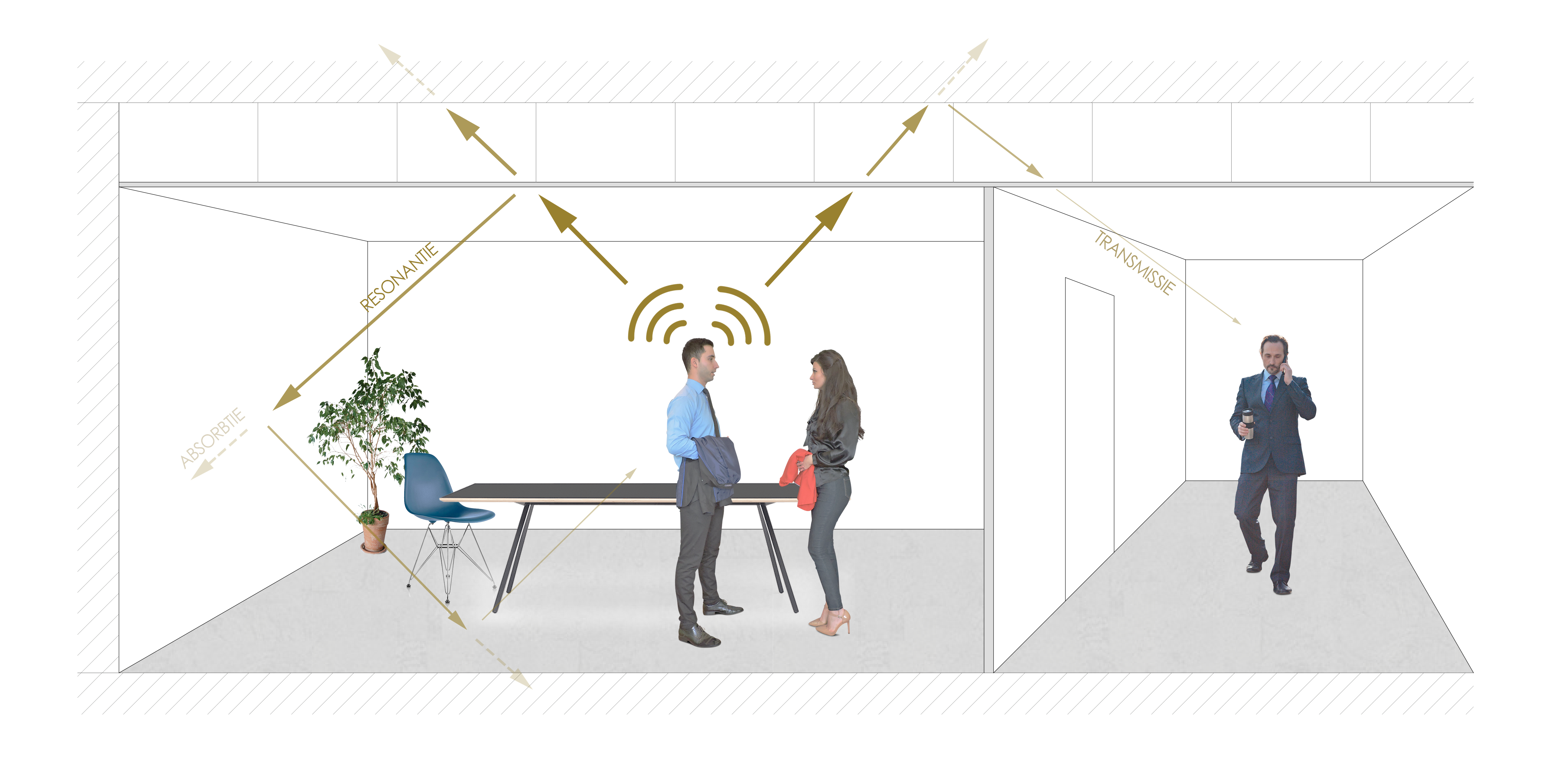Acoustics is the science of sound and how it travels. In your office, acoustics have a great impact on the well-being of your employees. Undesirable sound disturbs them while good acoustics help them to hear what is important.
How sound moves
Sound waves move in a straight line until they collide with an obstacle. This may be any object: a wall, ceiling or floor, furniture, a plant or a curtain. At that moment, part of the sound energy rebounds, part is absorbed by the material on which the sound waves collide and part seeps through.
Transmission and resonance
‘The acoustics here are very poor.’ It’s a complaint we often hear, but which actually says nothing in itself. No two disruptive sounds are the same. Complaints about acoustics can have two causes: either the sound is penetrating from a different, adjacent room and disturbing the conversation (‘transmission’) or the sound is bouncing around the room itself, from a conversation for example, and this creates a disruptive reverberation (‘resonance’). There’s also contact sound: sound that is caused, for example, because someone on the storey above you dropped something on the floor.
A well-thought-out acoustic design takes all these problems into account. By increasing the sound absorption through use of the right materials, the sound bounces around less in the room itself, resulting in less disruptive atmospheric sound and less echo. The sound will not leave the room as easily, meaning that no one in adjacent rooms will be forced to listen to your conversations.

Office acoustics
Users find the acoustics in a space a lot more pleasant when the sound pressure stays low; in short, when they experience less reverberation, they can understand conversations well and are not interrupted by ambient noise. If there is a high degree of resonance, you’ll soon notice that people speak more loudly to make themselves understood. This escalates into a deafening soup of incomprehensible sound.
In the ideal case, acoustic considerations were already incorporated into the architecture of your building from the beginning. But what if they weren’t? There’s no need to panic. The correct tailored approach will be an integral part of your office design and deliver acoustic perfection.
Do you have a question about office acoustics? Contact us.